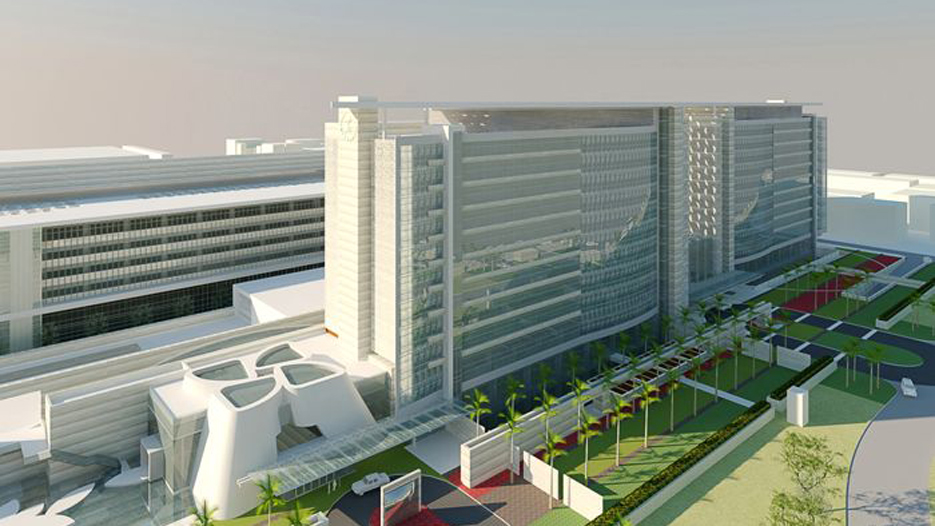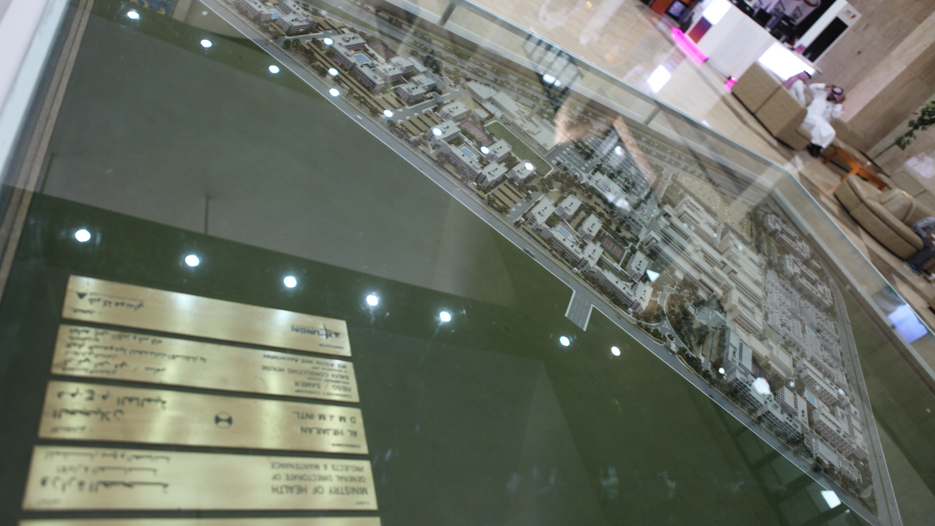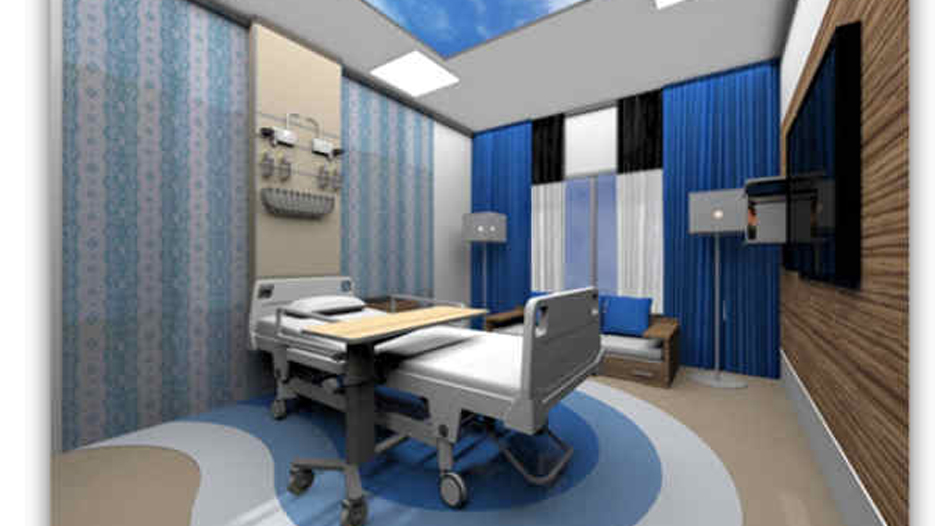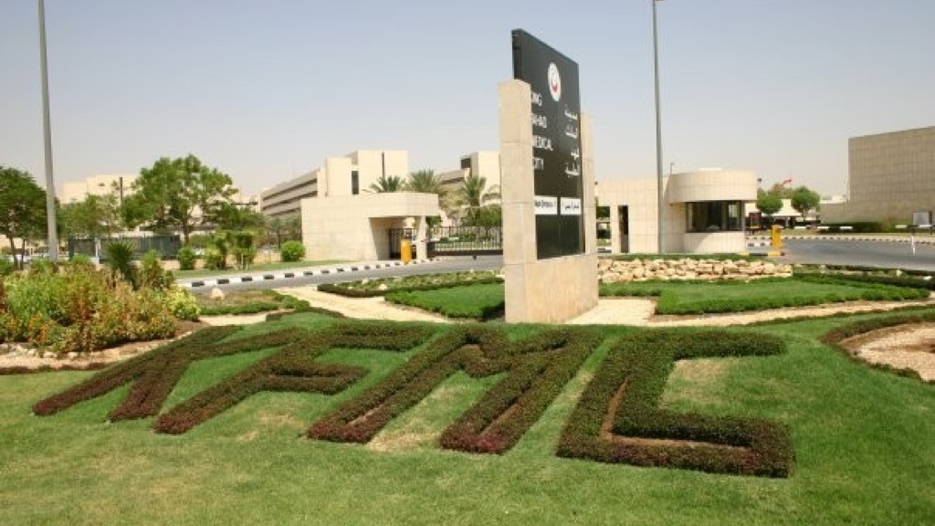The first Proton therapy centre in the Middle East is being built by KFMC
King Fahad Medical City is one of the largest medical complexes in the world. Most of it began a long time ago in the ‘70s when the idea was first formulated and then the building commenced in 1983. It became operational in 2003 and now after a decade of operation it has become one of the benchmarks in the Middle East and we have the vision to become an international benchmark.
Interview with Dr. Mushabbab Al Asiri, Executive Director of Medical Affairs of King Fahad Medical City

First of all can you tell us about some of the major achievements of the hospital and its major milestones?
King Fahad Medical City is one of the largest medical complexes in the world. Most of it began a long time ago in the ‘70s when the idea was first formulated and then the building commenced in 1983. It became operational in 2003 and now after a decade of operation it has become one of the benchmarks in the Middle East and we have the vision to become an international benchmark.
The idea behind this medical city is to serve specialised services in tertiary care and quaternary care mainly in neuroscience, cancer and cardiology. In addition, King Fahad Medical City boasts rehabilitation services, specialised women´s care, a hospital specialised in children’s complex medical problems and specialised inter-medicine and surgery unit. The city has around 8,000 staff among caregivers and supportive staff.
The city has around 8,000 staff among caregivers and supportive staff.
After this decade of operations, we have become a point-of-attraction for specialised, quality medical care services. Our achievements make up a long list, but the major achievement is that we provide quality clinical care that has been logged as the benchmark in Saudi Arabia.
We started receiving patients from outside of Saudi Arabia looking for treatment in our institution. Now more than half of our human capital is local. They are Saudis who have been trained and groomed over time to take care of our patients. We have scholars that go to Europe and North America and who come back with new ideas and new projects.
For example, the plan is to set up a genomic lab in Saudi Arabia. Further facilities are under construction, such as the neuroscience centre and the oncology centre and the hospital will be the first to house proton facility in the Middle East. These are the three new projects under construction and the plan is to build a research centre.
Our team did the most complex surgery for an obese patient who was the world record holder for obesity; the patient weighed 600+ kilos. He came to the hospital crippled, he could not move and he left KFMC three weeks ago walking for the first time in a long time. We added quality to this person’s life. He lost more than 400 kilos and he is now starting to mobilise and come back to life.
This kind of achievement is just for one person, but it is a life; we have added a life to a person who was crippled and that is in addition to so many other patients that are being treated for cancer, stroke, heart attacks etc. All of them have received quality care and have left KFMC smiling and come back as our routine patients.
One of the achievements that I look most proudly upon is that KFMC has become a factory for highly qualified professional people. We have graduated probably up to 50% of the leaders in healthcare in Saudi Arabia. They came here as staff and were groomed and then went outside of KFMC as executive directors and leaders. Either in private or government hospitals. This for us is an achievement: that we provide these kinds of professionals that transform the healthcare environment in Saudi Arabia.

Can you perhaps mention some further specific examples of surgeries that you have pioneered in King Fahad Medical City?
Locally we have treated some fairly difficult cases, one of them is a patient who had a cord transection and he lost mobility in his lower limb and our team in spinal and orthopaedic surgery treated this patient. We are also doing a fairly complex neuro surgery procedure for brain cancer. We became the most popular brain cancer surgery destination in Saudi Arabia. We have the first inter-operative MRI that is helping our surgeons do fairly complex surgery in a way that has excellent outcomes and because we have talented surgeons and this cutting-edge technology available.
In the cancer centre we are one of the few centres in Saudi Arabia doing total body radiation and we do comprehensive cancer care. We have also begun the planning to start the bone marrow transplant program at KFMC. The children´s hospital is working on treating celiac disease, which is a rare metabolism disease, and we are working with our team to make this hospital the benchmark for celiac disease. We also have the first stroke program in Saudi Arabia that is accredited by the joint executive commission and we have the first specialised stroke team in Saudi Arabia. If a patient arrives at KFMC within 6 hours of their symptoms, they will go home as normal. We have an excellent stroke program that is unique in Saudi Arabia. The important thing is that people come to KFMC suffering and they go home smiling.
In research, we are investing a lot in our simulation centre which is a pioneering idea to have a virtual hospital. In the past when medical students, nurses or scientists embarked on their training, they were trained in an environment with patients or other staff. That sometimes can breach patient confidentiality or privacy. So we thought that we could bring this idea from aviation science where they use simulation to train the pilot and the crew and bring it to the health sector. We are now building this simulation centre to offer this kind of training in a virtual hospital. There will be an Operating Room but without a patient, there will be a CPR program but without patients.
It is not only for the health sector but also for our admin, so we have programs for administrative staff. People working in health records, people in bioinformatics etc. They can all use our simulation facility for proper training before they go live with patients. We are also working to improve the availability of medical devices in the market.
Our scientists will work on different medical devices to improve their outcomes and to add some additional functions to those medical devices. They work using simulation software to get the conditions just as they are in the local market. We have a lot of hope for the simulation centre becoming one of the most successful programs undertaken and we have already been invited to present our experience in Dubai. As well as having been invited to present it in Canada and we should soon see further invitations from China and Japan.
Simulation centres in health care are a new-thing, it is not very popular yet and we are one of the few medical centres in the world doing this kind of training for health staff. It adds safety and offers respect for the patient so that they are not unduly affected or inconvenienced by the training process. It makes a link between the academy and the hospital. In the past you moved from university straight to the hospital, but now you can have a simulation centre before you reach the patient.

Let’s now talk about the proton centre and the leading centre for cancer surgeries.
Proton is a medical device which is very large. Proton is not a new technology that has been around for a while, but what makes it a little unpopular is the cost. It is a huge device; you need to install it in a space the size of a basketball stadium because it is so large. Because it is so large it is also costly due to all the materials it is made of.
Twenty years ago there were only 4 centres in the world with proton. One of them was for research and the others just treated a small number of patients. Over the last twenty years however, proton has become very useful in treating patients with cancer. In very sensitive areas, for example paediatric or children’s back or brain tumours. You can try to treat the tumour but with the available facilities in oncology while you treat the tumours you may affect the rest of the brain and the children may grow up with some handicap problems and some have sadly become mentally affected by the classic radiation.
KFMC with an investor came to an agreement that we will build the first proton facility in the Middle East and in Saudi Arabia. It is going to cost around USD 300 million.
KFMC with an investor came to an agreement that we will build the first proton facility in the Middle East and in Saudi Arabia. It is going to cost around USD 300 million. This agreement with the investor meant KFMC had the first unique project that was a public private partnership. This was new for the healthcare sector in Saudi Arabia where it is normally run completely by the government. We started building the facility and the architect completed the work in 2011 and next week they will start installing the device itself. So we are going to have this facility for the first time in Saudi Arabia, for the first time in the Gulf region and for the first time in the Middle East. We hope we shall help a lot of children with cancer. They will get a cure from cancer and they will get quality of life.
There are also new applications for using proton in other areas apart from paediatrics; it is starting to be used in lung cancer and renal cancer. These treatments should become available at KFMC. That will make cancer care comprehensive in Saudi Arabia; we shall have primary care with screening and also the facility for cancer treatment. We think that we are going to have patients from outside of the Middle East; an Italian group has already approached us. Who say they could send patients to Saudi Arabia and we may yet receive patients from other regional countries that don’t have the proton facility for treatment here.
By the way, proton is not yet available even in England. So we may one day receive patients from England to be treated with proton. It was a public-health issue in England. When a child with brain cancer had to travel outside of the country to be treated with proton. I think he was treated in Germany, so one day we may receive patients from the UK for proton treatment.

At the moment the proton facilities are in Germany and the US. Where else?
The proton device that we bought, as I mentioned is a huge device and each part of it is built in a different country so the steel part of it was made in Germany, and the IT part was manufactured in the US whilst there are other parts made in China and Japan. It is a light-manufacturing factory that is very international but the main part is made in Europe and the US.
In The States there are now 6 centres with proton and all of them were built in the last ten years, because it has become popular and there is demand for it. There is one centre in Germany and they are building a centre in Korea. There is also a centre in Japan. There is also a proton device in Switzerland, but it is for research only.
What about your oncology department?
The cancer centre was one of the pillars of KFMC when it started because this was the first facility under the Ministry of Health for cancer care. We started the program in 2005 and we started treating patients in 2007. We served more than 2,000 new patients last year in KFMC and that by itself is around 15% of total cancer patients in Saudi Arabia.
We have five departments; we have medical oncology, haematology and bone marrow transplant, radiation oncology, children and palliative care. So we offer comprehensive cancer care. In addition we are the main player in national breast cancer screening program. So we also do primary care in addition to tertiary care. We have only sent a few patients for bone marrow transplants because we haven’t started that program yet. We will start it in May this year, 2016. We are going to start the program with BMT because we are ready to launch it. By that time we will have achieved comprehensive cancer care.
We also have excellent surgical oncology within the KFMC. We have breast cancer surgeons and thoracic surgeons and specialised surgeons for brain tumours. We also have a program for muscular skeletal tumours and we have a program for paediatric cancer surgery.
If a patient comes to KFMC they will have all of the facilities within the medical city. We have investigation and an excellent oncological imaging department with MRI, PET scans, CTs and others. We have an excellent state of the art pathology department and so we have all of the facilities needed for cancer, which include surgery, chemotherapy, radiation therapy, and supportive care all together.
We have built excellent relations with cancer societies in the charity arena. We are working with the Saudi Cancer Society and the Saudi Cancer Foundation to do the support side outside of the hospital. We feel that this kind of care is unique and comprehensive. That is why our cancer centre is called “the Comprehensive Cancer Centre”.

Give us some of the numbers of outpatients, emergency patients etc.
We have 1,200 physicians working at KFMC with a very broad spectrum of specialities, and we have more than 3,500 nurses, some of them specialised and others are general nurses. In addition we have more than 1,800 allied healthcare personnel, we have 250 pharmacists and we have 1,500 administrators. If you look at the number of beds at KFMC, we have 953 beds that are distributed amongst different specialities such as the cancer centre, cardiac centre and the neuroscience centre, the children´s hospital, women’s hospital and the rehabilitation program centre as well as in the main hospital for medicine and surgery.
The number of patients served in the last year was 19,000 new patients with an occupancy rate of up to 80% and with excellent bed turnover. We have a program for day cases and day procedures where the patient doesn’t need to sleep in the hospital, they just come in the morning and have their procedure and go home. For ICU we also have a specialised area for patients who require intensive care; we have 167 beds in ICU some of them in neo-natal ICU, neuro ICU, paediatric ICU and also in the cardiac coronary care unit and post heart surgery unit.
The occupancy in ICU is up to 83%, which is a good occupancy. The length of stay in our ICU is about 9 days, which is also excellent because our patients are served in the ICU, and get out of ICU to the routine beds and then outside of the hospital when they are in good health. Our emergency room is a very active emergency room because it is open. We don’t restrict the emergency room. So anybody who is suffering from any sort of disease can come to KFMC.
Last year we served more than 100,000 patients that were seen in the emergency room. If they need specialised care then they get admitted to the facility or they are served and sent home after having been taken care of in the emergency room. Our outpatient department is very busy also. We saw a quarter of a million patients last year. The exact figure is 238,000 patients coming through our outpatient department. Last year 19,000 patients were admitted to the hospital and the number of major surgeries done at KFMC was 3,700 and with around 6,000 minor surgeries. The number of surgical procedures was around 6,000, surgical procedures, which means when a patient has an intervention, bronchoscopy for example. In the day surgeries, we performed 806 cases last year and the number of lab tests done in 2015 was 5.5 million in our laboratory. We had 45,000 units of blood products served from our blood bank and our medical imaging department performed 100,049 cases.
We had 45,000 units of blood products served from our blood bank and our medical imaging department performed 100,049 cases.
These are great achievements. We have served a lot of people suffering from many different kinds of problems. Our scientists work very well; when we started in 2007 we published only 11 papers but in 2015 we published 135 papers which is a major move forwards and you can hopefully understand that the explanation for this being that the scientists came back after their scholarships abroad and started producing pure scientific papers and with access to respected international journals. Our scholarship program is very active, last year we sent 950 scholars to get training in medical and non-medical fields related to healthcare.
They will come back after 2 or 3 years to serve more patients at KFMC. Our hospital is also well known for new doctor training; last year we trained 3200 physicians at KFMC. We became a university or college of medicine for staff and talented physicians that want to be trained in specialised services. KFMC is one of the best places to train young physicians to become specialised in healthcare. We have around 18 different training programs in different areas of medicine such as in adult and paediatrics, women, rehab, cardiac surgery, endocrine, rheumatology, gastroenterology, cancer with all broad specialities, neurology, neuro surgery etc.
There are more than 18 programs and we are one of the best training centres for young physicians. With all this information, our aim at the end is to add to quality of life. We want the people who come into KFMC suffering to go home with good memories of their stay in KFMC and we want to get them back to their community in good health.
Can you give us a comprehensive ranking of the medical city vis-a-vis some of the regional medical centres? Can you compare yourself to others locally or in other countries?
KFMC is the largest medical city in the Middle East; not only in terms of the space allocated but also with the number of beds, staff, research and patients served. We are the largest medical complex in the area. We are proud of this and we are growing.
In two years’ time our bed capacity will reach 1,800 to 2,000 so at that stage we will become one of the largest medical cities in the world. We are also planning now on becoming a cooperative of medical facilities, so as we may attract other hospitals to join our administration and work as a cooperative. At that stage, which is not too far down the line, I would say in a few years, we should certainly become one of the largest in the world.